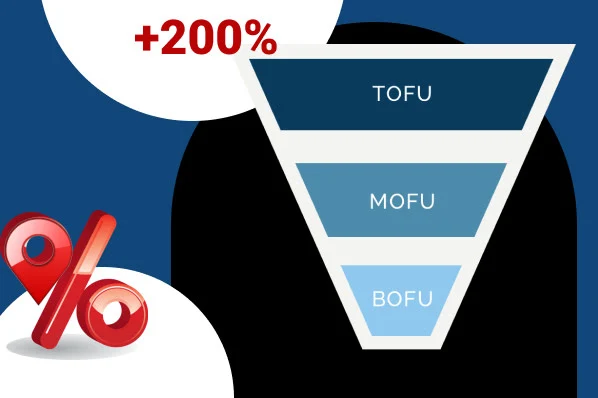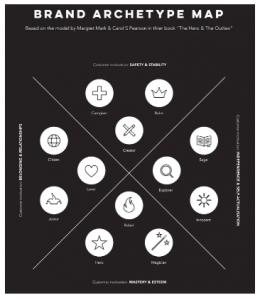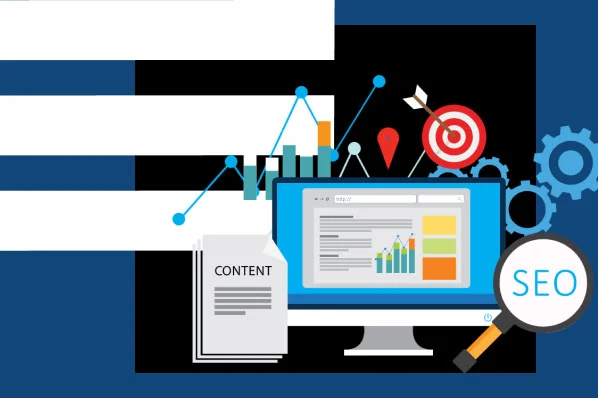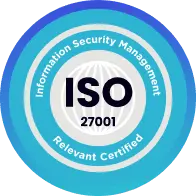We can help your brand find its archetype, just write to us.

Isn’t everything just lovely? It’s positively wonderful! The birds are singing and the bunnies are dancing. The world is bright and sunny, just like the optimistic world of ‘The Innocent’.
This archetype embodies purity and simplicity, always striving to do the right thing. Archetypes are recognizable patterns of human behavior that we often see in stories. They help us make sense of the world around us. For those in the field of ‘meaning management’, archetypes are a powerful tool for building great brands and creating amazing creative work. They connect with audiences on a deep emotional level. In this post, we’ll explore the Innocent archetype, building on the work of Margret Mark and Carol S Pearson in their book “The Hero and the Outlaw”.

An advent to the Innocent Archetype
As human beings we choice a higher international. A utopia of a golden age wherein everything works out and is just perfect for us to exist in. The Innocent lives for this perfection. Whilst looking ahead to that lovely destiny they seek to live a life of perfection now promising to boost us out of the darkness and chaos of our lives by means of their nice mind-set. They assist us to dream of perfection.
Desire: to revel in paradise
Goal: happiness
Greatest Fear: doing something wrong
Strategy: to do the right issue
Vulnerability: naivety
Talent: optimistic faith
Motto: “Free to be”
Always looking for after a future paradise the Innocent will remind and promise us of the virtues of honesty. Their ideas can sometimes lead them into problem as they do now not frequently assume others to be imply.
Brands which embody the Innocent: McDonald’s, Innocent Smoothies, Birdseye, Coca-Cola.
Motivations
According to Mark and Pearson, the Innocent sits inside the quadrant of archetypes which serve the consumer motivation of ‘Self Actualisation’. According to Maslow’s hierarchy of desires, this archetype, therefore, serves one of the higher degrees of human desires.
The archetypes motivation is that of independence. They need to be freed from constraints in order to live with out drawback in paradise. They want to use positivity, religion and optimism to defeat tyranny and oppression.
We will help you create or see the archetype of your brand, just contact us.

Rebel Brand Archetype
There is a problem in the world that requires a strong response. People are pushing back, overturning the status quo, and rebelling against the system. The leaders of these movements embody the archetype of rebellion, driven by purpose and a desire to disrupt. This archetype holds enduring value for anyone dissatisfied with their current situation. This post explores how the rebellion archetype can be adopted as a powerful brand persona.
Archetypes are recognizable patterns of human behavior that are often amplified in stories. Stories are how we make sense of the world around us. For those involved in managing meaning, such as storytelling, design, and branding, archetypes are a powerful tool. They help companies create meaningful connections and produce innovative work by communicating on a deep intellectual level. More on the power of archetypes can be found here.
This post will examine the Hero brand archetype, building on the work of Margret Mark and Carol S Pearson in their book “The Hero and the Outlaw.” In their work, they refer to the Rebel archetype as the ‘Outlaw’.
Introducing the Rebel Archetype, whose aim is to overthrow existing structures through seeking revenge or revolution. They disrupt the norm and destroy what is not working, breaking all rules. Their fear is powerlessness and insignificance, so they strive to make an impact in everything they do. They challenge the status quo and act as catalysts for change. There are two types of rebels: virtuous rebels like Robin Hood or Princess Leia, who have strong values, and immoral rebels like mobsters, pirates, and cowboys. The rise of rebellion creates tension in stories, which is appealing to us. The Rebel archetype falls under the quadrant of archetypes that serve the customer motivation of “Mastery & Esteem,” appealing to those who want to overcome obstacles in their way.
We will help you create or see the archetype of your brand, just contact us.
Values of your brand
Defining the core values of your brand can be a challenging task, especially when you’re just starting out. But don’t worry, we’ve got you covered with this extensive list of examples of brand values to help you get back on track in no time!
In a previous post, we discussed the importance of defining brand values and how they can help you connect with your audience. We also included tips on choosing values that are unique and meaningful to your business.
However, we understand that sometimes you may need more guidance and a clear starting point to help you articulate what is important to your business. That’s why we’ve compiled this list of brand value examples that you can refer to.
To make the most of this list, it’s essential to remember that while the words listed below may resonate with you, it’s crucial to be clear and specific about what they mean for your brand. For instance, if a word like “reliability” stands out to you, ask yourself why and how your brand embodies this value.
Brand Values List

One example of how to approach brand values comes from Coca-Cola. They’ve defined their values and added a short phrase to each one that further emphasizes what is important to their brand. For example:
Leadership: The courage to shape a better future
Collaboration: Leverage collective genius
Integrity: Be real
Accountability: If it is to be, it’s up to me
Passion: Committed in heart and mind
Diversity: As inclusive as our brands
Quality: What we do, we do well

While these values fit with Coca-Cola’s image as a massive brand, for small businesses, it’s crucial to avoid choosing brand values that describe an idealized version of your business. Instead, focus on what you really do and how you improve the lives of your customers, no matter how small. Think about what drives you to deliver a quality service and how you can convey that to your audience.
If you’re looking for more guidance on choosing authentic values for your business and using them to attract ideal clients, apply for our free guide.
Guide
Choosing genuine business values is an essential aspect of building an authentic and purpose-driven organization. These values serve as guiding principles that shape the company’s culture, decision-making processes, and relationships with stakeholders. Here’s a guide on how to choose genuine business values:
1. Reflect on the Purpose and Vision of the Business:
– Start by understanding the purpose and vision of your business.
– Reflect on the core beliefs and principles that align with your business’s mission.
– Consider the positive impact you want your business to have on employees, customers, communities, and the environment.
2. Assess Your Core Beliefs and Principles:
– Identify your personal core values as the business owner or leader.
– Reflect on the values you hold dear and believe are essential for the success and sustainability of your business.
– Consider the values that will resonate with both your employees and target audience.
3. Involve Key Stakeholders:
– Engage your employees, partners, and other stakeholders in the process of defining the company’s values.
– Conduct workshops, surveys, or meetings to gather input and perspectives.
– Ensure that the chosen values are representative of the collective beliefs and aspirations of the organization.
4. Consider External Factors:
– Assess the expectations and needs of your target audience and customers.
– Consider the values that are relevant to your industry and marketplace.
– Evaluate societal and environmental trends to identify values that align with sustainability, diversity and inclusion, or social responsibility.
5. Prioritize Authenticity:
– Choose values that truly resonate with your organization and reflect its identity.
– Avoid selecting values based solely on current trends or what may be popular.
– Ensure that the chosen values can be genuinely integrated into your organization’s culture and day-to-day operations.
6. Define Each Value Clearly:
– Clearly articulate and define each value in a concise and understandable manner.
– Avoid using vague or ambiguous language that can lead to different interpretations.
– Use language that is meaningful and relatable to your employees and stakeholders.
7. Align Values with Actions:
– Ensure that the chosen values guide decision-making and behavior within the organization.
– Embed the values into your company’s policies, processes, and practices.
– Communicate and reinforce the values regularly through internal communication, training, and recognition programs.
8. Continuously Evaluate and Evolve:
– Regularly assess how well the chosen values are being lived and embraced within the organization.
– Seek feedback from employees and stakeholders to identify areas for improvement.
– Be willing to refine or update the values as the organization evolves and grows.
9. Lead by Example:
– As a leader, embody the chosen values and demonstrate them in your own actions and behaviors.
– Encourage and empower employees at all levels to uphold the values.
– Recognize and celebrate individuals and teams who exemplify the values in their work.
10. Communicate and Reinforce:
– Clearly communicate the chosen values to all stakeholders, including employees, customers, and partners.
– Incorporate the values into your branding, marketing, and external communications.
– Continuously reinforce the values through storytelling, case studies, and shared experiences.
Remember, choosing genuine business values is a meaningful and ongoing process. It requires introspection, involvement, and commitment from everyone within the organization. By selecting values that truly reflect your organization’s purpose and beliefs, you can build a strong foundation for a purpose-driven and authentic business.







